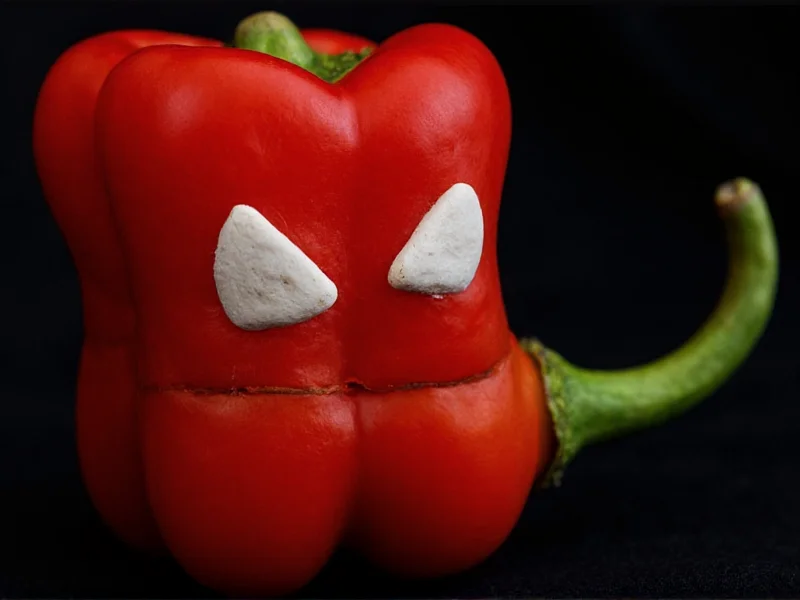The Scoville scale remains the standard measurement for chili pepper heat, quantifying the concentration of capsaicinoids—the compounds responsible for that burning sensation. Understanding where ghost peppers rank on this scale provides crucial context for culinary use, gardening decisions, and safety precautions when handling these fiery fruits.
Understanding the Scoville Scale
Developed by pharmacist Wilbur Scoville in 1912, the Scoville Organoleptic Test originally measured heat through human taste panels diluting pepper extracts until the heat became undetectable. Today, high-performance liquid chromatography (HPLC) provides precise measurements of capsaicinoid concentration, which are then converted to Scoville Heat Units for consumer understanding.
Pepper heat varies significantly based on growing conditions, soil composition, climate, and even the specific part of the pepper. The placenta (white ribs inside the pepper) contains the highest concentration of capsaicin, while the seeds carry heat secondarily through contact with the placenta.
Ghost Pepper Characteristics
Originating from Northeast India, ghost peppers (Bhut Jolokia) earned their name from the Assamese word “bhut,” meaning ghost, as eaters reportedly feel the heat so intensely it “ghosts” them. These peppers typically measure 2.4-3.3 inches long with a distinctive wrinkled appearance and can range in color from red to orange, yellow, or chocolate.
The ghost pepper held the Guinness World Record for hottest chili pepper from 2007 to 2011, with an average heat rating of 1,001,304 SHU. Though surpassed by newer superhots, they remain significantly hotter than most commercially available peppers.
Pepper Heat Comparison
| Pepper Variety | Scoville Heat Units (SHU) | Heat Relative to Jalapeño |
|---|---|---|
| Bell Pepper | 0 SHU | 0x |
| Jalapeño | 2,500-8,000 SHU | 1x |
| Habanero | 100,000-350,000 SHU | 20-40x |
| Ghost Pepper (Bhut Jolokia) | 855,000-1,041,427 SHU | 200-400x |
| Carolina Reaper | 1,400,000-2,200,000 SHU | 300-500x |
| Pepper X | 2,693,000 SHU | 500-600x |
Practical Handling and Usage
Working with ghost peppers requires serious precautions. Always wear nitrile gloves when handling, as capsaicin can transfer to sensitive areas like eyes and nose. Work in well-ventilated areas, as the volatile oils can become airborne. Never use plastic grocery bags for protection—nitrile or rubber gloves provide the only reliable barrier.
Culinary applications demand careful measurement. Start with minuscule amounts (1/8 to 1/4 teaspoon of dried powder per dish) and gradually increase. Ghost peppers work well in sauces, stews, and specialty hot sauces but require balancing with acidic or sweet components to create complex flavor profiles rather than pure heat.
Consuming ghost peppers triggers endorphin release, creating the “chili high” many enthusiasts seek. However, excessive consumption can cause gastrointestinal distress, sweating, and temporary breathing difficulties. Individuals with sensitive digestive systems should exercise extreme caution.
Common Misconceptions
Many believe the seeds contain the most heat, but capsaicin primarily concentrates in the placental tissue (the white ribs inside the pepper). The seeds merely absorb heat from contact with this tissue. Another misconception suggests milk neutralizes capsaicin better than water—this is accurate, as casein in dairy binds with capsaicin molecules, providing relief that water cannot.
While ghost peppers were once considered the world's hottest, they've been surpassed by several newer cultivars including the Carolina Reaper and Pepper X. However, they remain significantly hotter than most commercially available peppers and continue to challenge even experienced chili enthusiasts.
Safety Considerations
Emergency responders have documented cases of ghost pepper exposure causing temporary respiratory issues requiring medical attention. When cooking with superhots, consider these safety measures:
- Always wear eye protection and respiratory mask when handling dried superhots
- Never heat superhots in enclosed spaces without proper ventilation
- Keep children and pets away from preparation areas
- Have dairy products readily available for accidental exposure
- Wash all surfaces and tools with soapy water after handling











 浙公网安备
33010002000092号
浙公网安备
33010002000092号 浙B2-20120091-4
浙B2-20120091-4